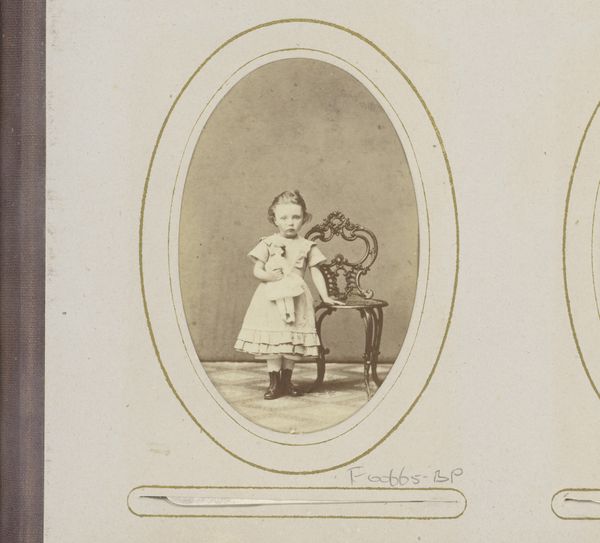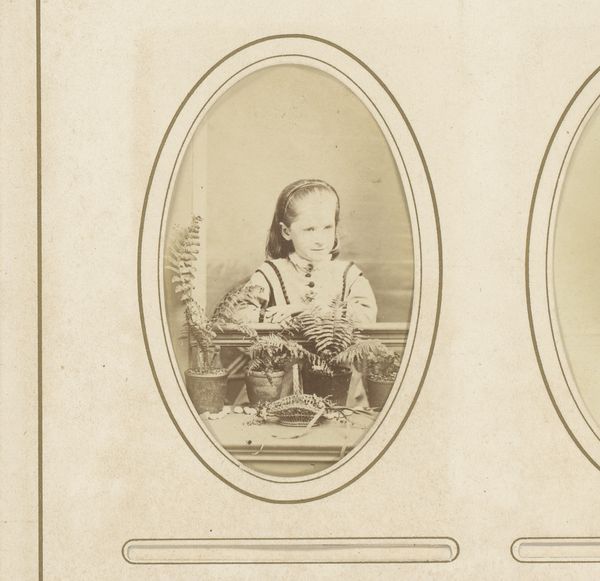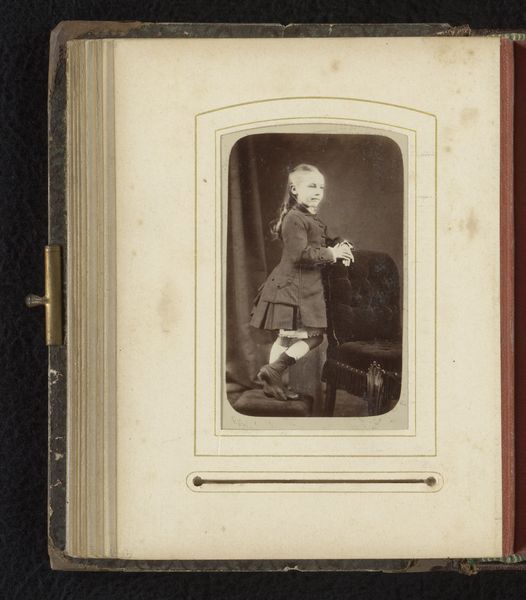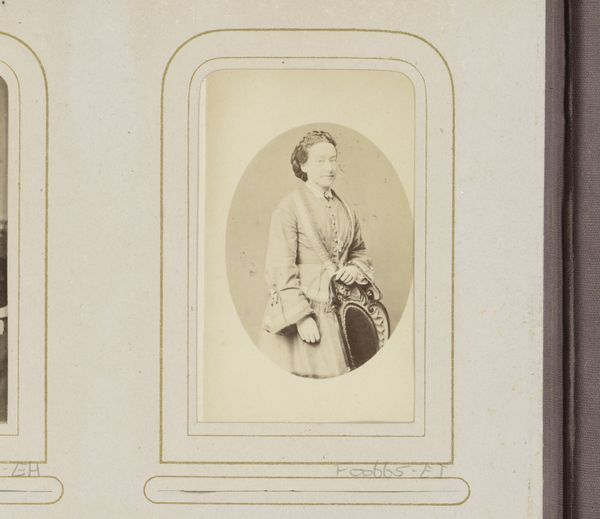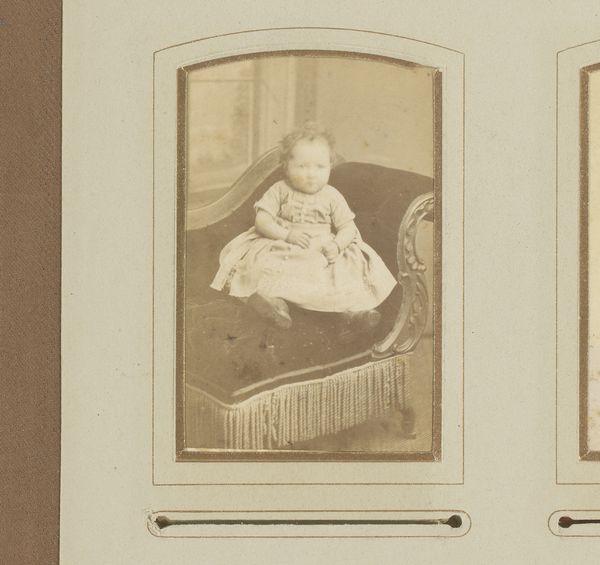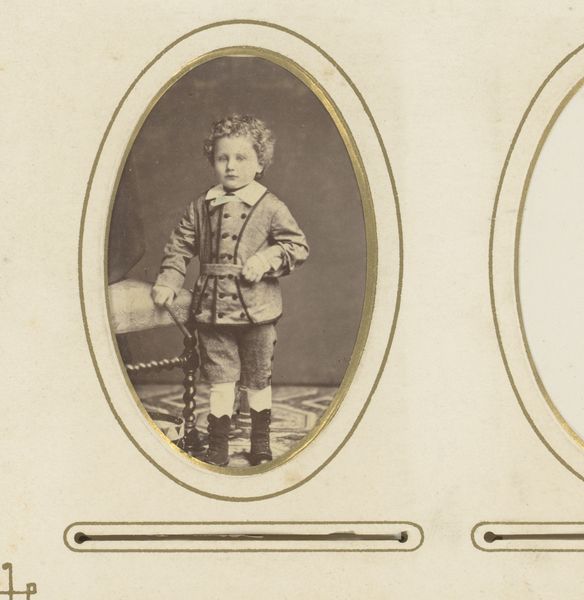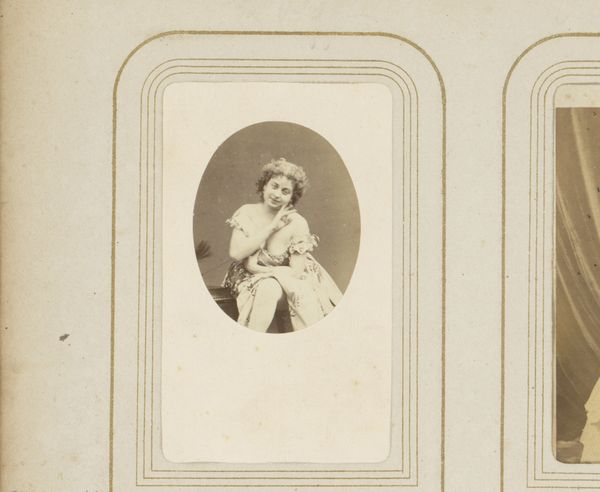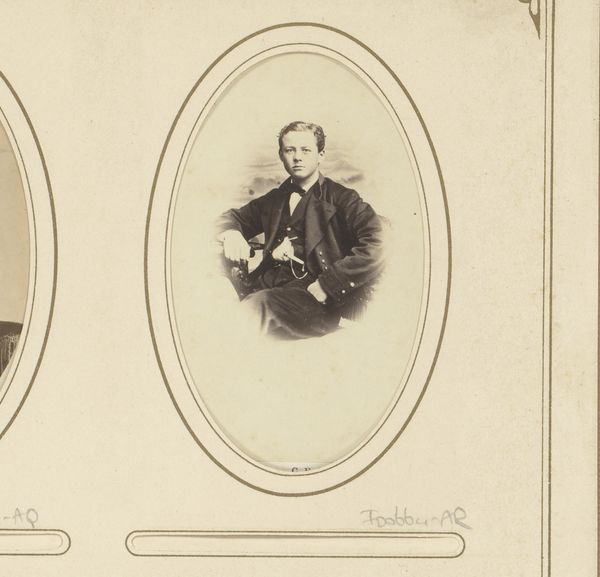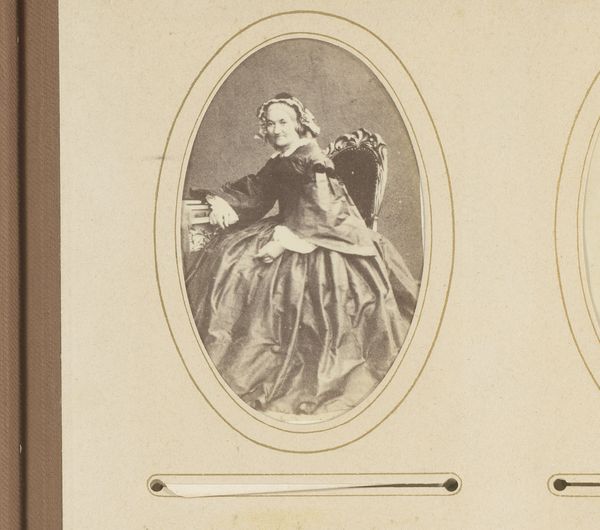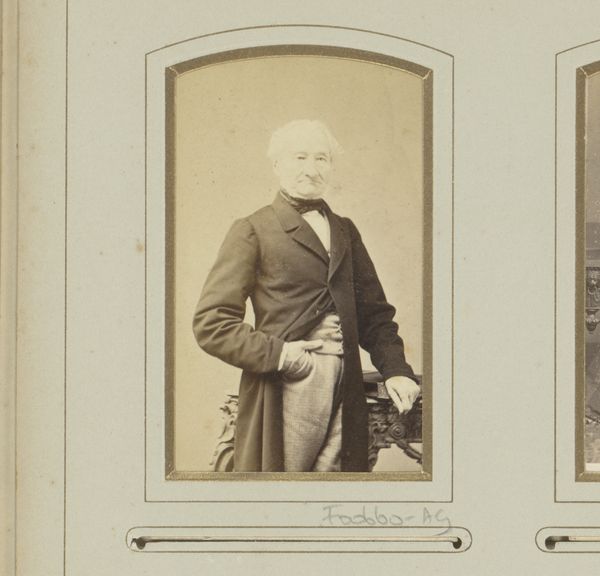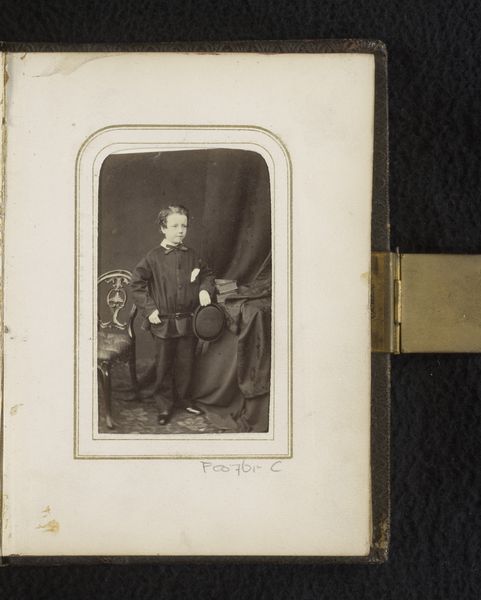
photography
#
portrait
#
photography
#
genre-painting
Dimensions: height 105 mm, width 63 mm
Copyright: Rijks Museum: Open Domain
Curator: This is an intriguing piece, a photograph from around 1879 titled "Portret van een onbekende jongen," or "Portrait of an Unknown Boy," by Dirk Niekerk. Editor: My first impression is one of vulnerability despite the obvious display of status. There's an uncertainty in his stance, almost like he's mimicking a role rather than embodying it. Curator: That's a keen observation. These photographic portraits of children, often presented them in miniature versions of adult roles to project a certain social standing, reflecting societal expectations and anxieties of that era. It also speaks to class identity; being able to afford to produce such an image also says something significant. Editor: Absolutely. We see the trappings – the tailored jacket, the cane, the perfectly coiffed hair. But, thinking about performativity and queer theory, isn't he perhaps signaling a particular ideal of masculinity expected of him, something he is still being taught to enact? And in what ways does the composition itself—the pose, the props—reinforce that narrative, especially when so many communities might be entirely excluded from this experience and expectation? Curator: Right. The politics of imagery in these contexts is crucial. Portraiture served as a means to solidify social hierarchies. Photography democratized it to some extent, making portraiture accessible to a wider middle class, but at the same time the elite ensured they used portraiture to distinguish themselves by demonstrating that access and aesthetic. The photograph thus functions as both a document of an individual and an artifact of its cultural moment. Editor: So, beyond documenting an individual likeness, could it be read as an early form of branding, or social messaging, designed to perpetuate specific class structures? Thinking about the child’s body in a Foucauldian sense—as a site of power relations. He’s being molded to fit a very specific role in the social order. How is this moment, captured for eternity, implicated in reinforcing or challenging societal norms? What possibilities could lie in destabilizing that ideal? Curator: And there's an implied viewer as well: Someone who is meant to receive, recognize, and interpret the symbols of class, aspiration, and conformity. This act of observing contributes to reinforcing these social structures and normalizing this expectation. It certainly begs for continued, careful consideration. Editor: Exactly. Analyzing beyond the surface aesthetic leads us to questions of how visual art—even portrait photography—operates as a social mechanism.
Comments
No comments
Be the first to comment and join the conversation on the ultimate creative platform.
